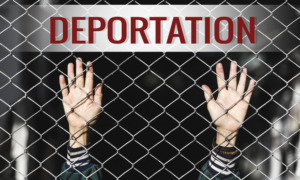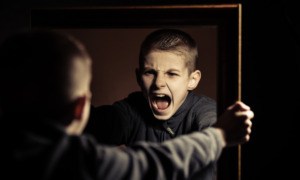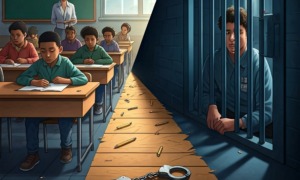Many parents think their children are safe in one of our most hallowed institutions, until they discover its dark side: violence, sexual predators, even murder.
I’m talking about church. In recent years, gun massacres in churches, religious schools and even Bible study groups have left 31 people dead, 15 of them teens. Documented sexual abuses of youths by clergy now reach the thousands.
Should parents protect kids from the dangers of church by keeping them home? No! The National Center on Child Abuse and Neglect reports that in 2003, parents murdered 1,200 children and teens, violently and sexually abused 200,000 and emotionally abused 35,000.
With predators and the worst cruelties lurking in our largest institutions, families and churches, where can teens safely interact? Why, on the Internet, preferably alone and unmonitored. Statistically, adults who supervise teens are more likely to abuse them than is anyone they meet online.
Consider the sterling record of personalized websites such as MySpace.com, whose 46 million registered users (the vast majority young) share billions of unsupervised interactions daily, with no deaths and few dangers. Teens have forged relatively safe environments where most pursue not the pornography, cruelties, seductions and preying that fevered adults imagine (or fantasize), but quotidian mundanities.
Naturally, wherever youths gather, herds of hysterical “experts” and reporters follow, relentlessly vilifying teens’ spaces as feeding grounds for psychopaths and bullies. Typical of the media barrage was Knight Ridder News Service’s Dec. 26 story painting MySpace as a pornographic, predator-infested jungle of meanness and depravity.
Evidence? Reporter Oliver Prichard blamed the website for one case of sexual molestation (by a 37-year-old stalker), four mean pranks (three reported thirdhand) and a couple of pubescent sites he found titillating. Searching other stories, I find a few more alleged incivilities and another molestation (by a 35-year-old man).
True, there’s more evil online than that, just as there’s more church and family abuse than what’s reported. Yet, while thousands of real abuses of teens are confirmed in adult-run institutions every year, strikingly few can be shown to result from teen-dominated Internet exchanges.
What’s shocking is how safe youths are online when left to themselves. My local news stations incessantly shout the dangers of the Internet – then present no real examples beyond routine gossip.
The Ad Council and other panickers warn: “One in five kids are [sic] sexually solicited online.” (That’s all? I get a dozen generic propositions every day.) Teens can handle it. In giant Los Angeles County, the Southern California High Tech Task Force reports zero cases of criminal behavior connected to MySpace.
I’ve surveyed hundreds of my college students, Internet veterans all, without unearthing significant online dangers other than the usual annoyances encountered offline. “I met more weirdos in Boy Scouts,” one wrote.
Of course, the mass media freak-out over imaginary Internet perils has nothing to do with young people’s safety. It’s about giving self-interested grownups yet another forum to boost books and programs, peddle censoring software, grab grant funding and flatter themselves by demeaning adolescents.
Prichard’s article features both “experts” and the reporter stereotyping youth as cruel, brazenly seductive and impulsive. One name-caller, Campus Outreach Services Director Katie Koestner, brands youth as “mean” and “demonic.” It’s easy to see where teenage bullies get their adult role models.
But Americans’ rampant fear of cyberyouth is worse than just cheap profiteering and press sensationalism. There’s something truly sinister about a society in which the slightest effort by adolescents to establish lives of their own immediately draws a howling mob of fear-mongering demagogues, especially when that society is so indifferent to real dangers young people face, such as poverty and family abuse.
I could easily document more violent teen deaths in one impoverished Los Angeles ZIP code (say, 90044) in five months – and more in American families in five days – than could be blamed on MySpace interactions nationwide in five years.
What accounts for adults’ mindless paranoia over virtual nothings, and their callous disregard of real menaces? Brain atrophy, I’m guessing. The June 2004 issue of Nature reported disturbing findings that adult brains suffer significant deteriorations in memory and learning genes. Adult thinking, absent strong self-awareness and discipline, lacks the flexibility to rationally assess unfamiliar developments and reflexively fears anything new.
Teens and the Internet are newness squared.
Well, buck up, grownups. We gray-hairs can handle new things, too. Liberate your homes from the wimpy Net Nannies, the spy-on-your-kid schemes and the paranoid ravings of so-called experts. Give your teens the space to grow up. Do anything to improve the odds that they’ll turn out better than us.































